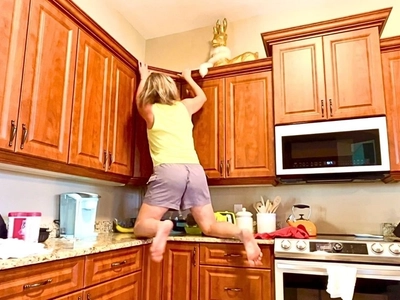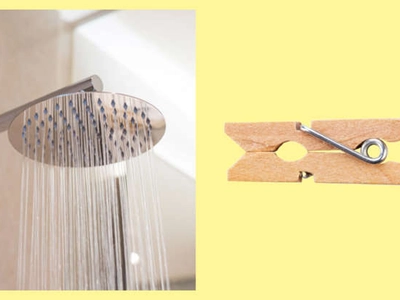My residence was immaculate when just my husband and I lived there. Then his companion moved in, and conflicts began immediately. My spouse ignored my feelings and the anxiety I expressed. The situation only improved when I finally intervened directly.
When my husband provided his friend shelter in our residence, he did so without asking me first. I never anticipated that hosting his longtime buddy would become so troublesome. The situation ultimately forced me to take bold steps to fix everything.
This picture shows the bedroom after my husband's closest friend, Alex, had been residing with us for several weeks. The stench is impossible to convey, but trust me, it's disgusting and insufferable! Alex relocated to our home because his house needed extensive repairs.
Truthfully, my husband invited his friend to reside with us without consulting me beforehand. I expressed my disapproval of this arrangement by asking, "What's the timeframe for his stay? And why didn't you consult me before making such a significant decision?"
"I apologize, darling. I wasn't thinking clearly. I let my enthusiasm take over," he replied. He looked genuinely sorry, so I gave in. Unfortunately, that proved to be a serious error on MY part.
The plan started as a temporary solution, but weeks stretched into months. My husband, Jake, thought having his best friend around would be enjoyable. He failed to consider the additional housework this created for me.
"Everything will be fine, honey," Jake said when Alex first arrived with his travel bag and gaming collection. "It'll remind us of earlier days. We'll enjoy ourselves!" He also promised they wouldn't interfere with my routine or cause problems.
I displayed a fake grin while internally dreading the untidiness and the prospect of sharing space with two men. Jake and Alex had been close since university, connected through their enthusiasm for video games and athletics. I preferred tranquility and organization.
In just days, our home changed completely, and NOT for the better! Beer bottles scattered across the living area, food wrappers appeared everywhere, and dirty clothes accumulated in Alex's quarters! Jake and Alex consistently stayed up past midnight.
Their only activities since our visitor arrived were playing video games or consuming beer together. Their boisterous enjoyment echoed throughout the house while I attempted to sleep with my pillow covering my ears. The additional cleaning duties overwhelmed me.
Furthermore, I started feeling increasingly isolated. One night, after an especially tiring workday, I discovered the kitchen in disarray. The countertop was covered with food particles, unwashed dishes filled the sink, and some unknown sticky substance coated the floor.
I reached my limit! "This must END!" I muttered through gritted teeth with clenched hands. I determined to address my problems with Alex privately with my husband. However, he and his buddy were inseparable, making it challenging to speak with Jake alone.
When I finally found a moment when my spouse was by himself, I decided to approach him. "Jake, may we discuss something?" I asked from his home office entrance, where he worked while Alex played video games in the living area.
"Of course, honey. What's wrong?" he responded, still focused on his computer screen. "I'm overwhelmed with all the cleaning. I require assistance around the house." Jake stopped his work and turned toward me with a dismissive gesture.
Honestly, his reaction surprised and wounded me deeply. Disregarding my worries, he answered, "Stop being so negative! You simply can't handle when attention isn't on you. It's just one additional room to clean. Not worth complaining about."
His remarks hurt deeply! I prepared to respond when I realized he had returned to his work! He completely disregarded my presence! I departed feeling both furious and upset. That evening, I remained awake, hearing the longtime companions enjoying themselves!
At that moment I began formulating my strategy. I chose to demonstrate to Jake what "not worth complaining about" truly meant. I realized he needed direct experience. The following morning, I arose early and collected all Alex's garbage.
Since they rested late, they would wake much later than me. I collected the vacant containers, soiled garments, and partially consumed food and deposited everything in Jake's workspace. When they awakened, the area resembled a disaster zone!
"What's going on here?" my husband yelled from his office upon opening the door. I knew placing all the refuse there would create the strongest reaction since Jake worked from home. He required that space to be clean and usable.
I ignored his shouts since I understood their cause. Instead, Alex appeared and chuckled, "Wow, man! Your office looks terrible! You should clean it if you want to accomplish anything."
He then left to make breakfast and return to lounging! Jake avoided confronting me but pushed everything into a pile so he could enter and continue working. As time passed, unwashed plates, scattered socks, and food remains accumulated in my husband's workspace, causing him significant distress.
"I cannot function in THESE conditions!!!" he bellowed loudly enough for everyone to hear. I entered with a pleasant grin. "It's merely one room that needs cleaning, Jake, so handle it. Nothing significant, correct?" My spouse was LIVID, but my reasoning left him without a counter-argument. Alex, conversely, appeared embarrassed.
"Man, I apologize. I hadn't noticed how terrible it was," he said quietly. "Perhaps you should contribute more," I proposed before leaving them to manage their disorder. For several days, conditions improved. Jake and Alex attempted to maintain a tidier house, but their attempts lacked commitment.
The disarray gradually returned, and my irritation grew again. One Friday night, I reached my breaking point and confronted Jake. We engaged in a major disagreement where he blamed me for ruining their enjoyment. Alex attempted to intervene, but since he was the primary source of our tension, I demanded he not interfere.
My husband tried to protect his companion, which intensified my anger. I determined I'd had ENOUGH! I filled a suitcase and phoned my closest friend, Lisa. "May I stay at your residence for the weekend?" I inquired. "Definitely, sweetie. What's happening?" she asked.
After explaining my situation, she welcomed me warmly. During that weekend, I savored the peace and tidiness of Lisa's dwelling. I didn't need to clean up after anyone, providing me with a much-needed respite.
Early Monday, my phone indicated a call from Jake. "Return home please," he implored, sounding desperate and contrite. "The house stands in chaos, and I can't locate necessary items. Alex is unbearable to cohabitate with!" This person showed audacity calling after maintaining silence throughout the weekend.
Despite feeling some compassion, I remained resolute. "I'll come back when the residence is tidy, and Alex has departed." Jake exhaled deeply. "Fine, fine. We'll clean everything immediately. Just please come back today, my darling?"
"I'll contemplate it," I answered, avoiding any commitment that might suggest he had prevailed. Surprisingly, he promptly sent video evidence of them organizing the house. I opted not to answer the message, but after consulting with Lisa, I chose to return home.
I arrived later that day to find the house IMMACULATE! Jake and Alex had cleaned every surface, and my husband's friend had assembled his belongings. "I appreciate your hospitality," he stated bashfully. "I'll secure alternative accommodation until my renovations conclude."
As Alex exited, Jake embraced me tightly. "I apologize, honey. I didn't comprehend how laborious it was. I should have respected your concerns." I relented upon seeing sincere remorse in his expression. "It's acceptable. I simply need us to cooperate, rather than you and Alex uniting against me."
Starting that day, our situation became better. Jake put effort into maintaining a clean house and helped more frequently. Our residence transformed into a tranquil space again, and our bond strengthened.
This image shows the spare bedroom after my husband's closest friend resided with us for several months. The scent defies description, but trust me, it's delightful! Currently, the ordeal of hosting Alex exists only as a recollection of wisdom gained.
Jake grinned, placing his arm around me. "And one firmly etched in our memories."
Our routine normalized, yet this experience enhanced our connection. We discovered the value of open dialogue and honoring each other's personal boundaries. I realized that whatever difficulties confronted us, we possessed the ability to overcome them together.






